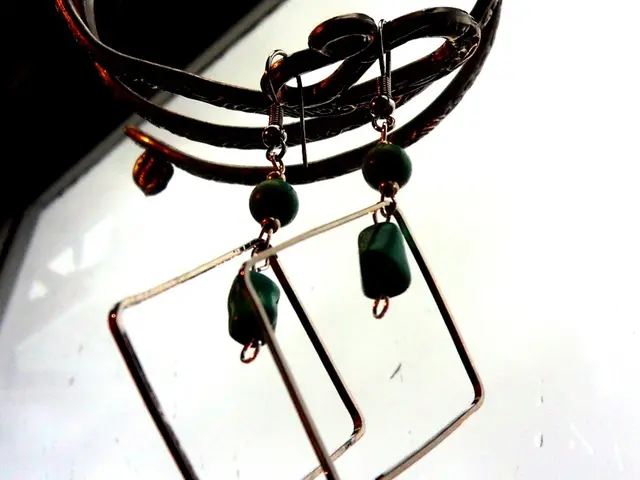Stimulating Facial Regions Flushes Out Brain Debris and Enhances Cognitive Abilities in Older Individuals
Visionary Science at IBS Finds a Game-Changing Approach to Clearing Brain Waste
Say goodbye to invasive procedures and drugs! Researchers at the Institute for Basic Science (IBS) have stumbled upon a revolutionary method to boost the brain's self-cleaning system. By stimulating certain lymphatic vessels on the neck and face, they've successfully improved cerebrospinal fluid (CSF) drainage, a crucial function for healthy brain function and aging.
Centered at the IBS Center for Vascular Research, an esteemed team led by Director KOH Gou Young, together with senior researchers JIN Hokyung, YOON Jin-Hui, and principal researcher HONG Seon Pyo, set out to explore the possibilities of CSF drainage enhancement. And they've done exactly that, with their findings published in Nature.
This innovative tactic champions safety and non-invasiveness, allowing clearance of brain waste through gentle mechanical stimulation—rather than relying on potentially harmful drugs or surgical interventions.
What's going on up there?
The brain, being an incredibly active organ, produces waste at an astonishing rate. For efficient brain function, clearing this waste is essential. This is primarily achieved by CSF, which moves through the brain and spinal cord and removes toxic substances such as amyloid-β and tau proteins, which have been linked to Alzheimer's and other neurodegenerative diseases. Unfortunately, as we get older, this drainage system slows down, contributing to cognitive decline.
The Secret Plot Twist: Superficial Lymphatics
In their initial research, IBS scientists had already unveiled crucial CSF drainage pathways via lymphatics at the base of the skull and the nasopharyngeal lymphatic plexus. However, these lymphatics are located deep within the neck, far from practical non-invasive access.
To broaden their understanding, the team used genetically modified mice and monkeys, tracing fluorescent markers through their bodies. What emerged was a new and exciting route of CSF drainage from the brain to superficial cervical lymph nodes. This pathway journeyed through a network of lymphatic vessels in the face, nose, and hard palate, bypassing the deep lymphatics. Stunningly, they found that these vessels close to the facial skin retained remarkable functionality even in older individuals, making them an ideal target for therapeutic stimulation.
Regulating the Flow
To put their discovery into practical application, the team created a handheld device that offers a gentle, controlled massage to these skin areas. This invention promptly restored CSF clearance to youthful levels in aged animals, drastically improving drainage without interrupting natural lymphatic contractions.
Next Steps Ahead
With these promising findings, the team is now investigating the impact of this drainage system in diseases like Alzheimer's and other neurodegenerative conditions. They're eager to explore whether the mechanical stimulation could offer preventive or therapeutic value.
Additionally, they're probing the mechanisms behind CSF clearance impairment in traumatic brain injury and other neurological conditions, aiming to discover broader therapeutic applications.
This research not only completes the map of the brain's waste clearance pathways but also paves the way for non-invasive approaches to slow neurodegenerative diseases. Their findings may lead to the development of wearable devices to enhance brain waste clearance in aging adults and those with neurological disorders.
About This Neuroscience Breakthrough
Author: William Suh Source: Institute for Basic Science Contact: William Suh - Institute for Basic Science Image: Image courtesy of our website
Original Research:
"Increased CSF drainage by non-invasive manipulation of cervical lymphatics" by KOH Gou Young et al. Nature
Abstract
By stimulating superficial cervical lymphatics through intact skin with a force-regulated mechanical device, researchers have managed to double CSF outflow, correcting age-related impairment in mice. This technique promises a non-invasive method to enhance brain waste clearance and may offer potential therapeutic benefits for neurodegenerative diseases. Future studies will focus on understanding how this drainage system behaves in various disease conditions and how this mechanical stimulation method can be applied therapeutically.
- As we age, cognitive decline becomes a growing concern, with links to a slowing brain self-cleaning system notably due to inefficient cerebrospinal fluid (CSF) drainage.
- A groundbreaking study led by the Institute for Basic Science (IBS) Center for Vascular Research proposes a revolutionary approach to boost the brain's waste clearance system.
- By stimulating superficial lymphatic vessels on the neck and face, researchers have successfully improved CSF drainage, potentially reversing cognitive decline associated with aging.
- This non-invasive technique, using a handheld device for gentle, controlled massage, could pave the way for wearable devices that enhance brain waste clearance in aging adults and those with neurological disorders.
- The IBS team's long-term goal is to investigate the impact of this drainage system on diseases like Alzheimer's and other neurodegenerative conditions and explore the preventive or therapeutic value of the mechanical stimulation.
- Their findings in neuroscience news highlight a significant breakthrough in addressing aging-related medical conditions, fitness and exercise for maintaining mental health, and therapies and treatments for various neuroscience-related health-and-wellness concerns.








